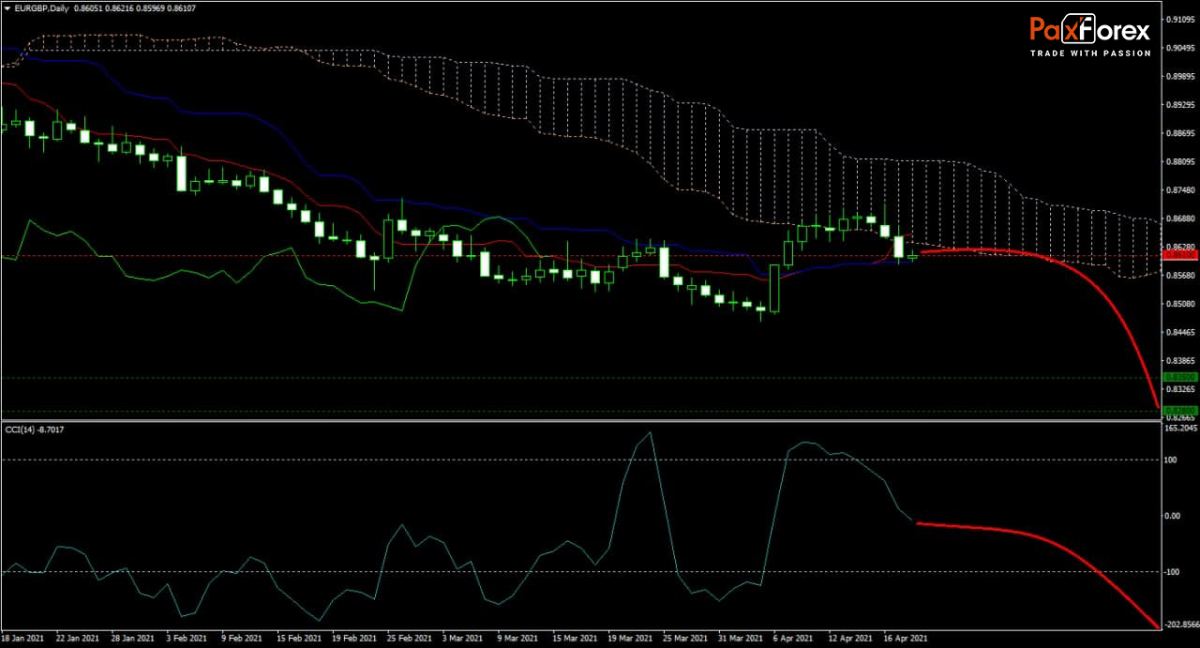Forex traders can compare this to the UK Employment Change for January, reported at -147K, and to the ILO Unemployment Rate, reported at 5.0%. Average Weekly Earnings for the tri-monthly period ending in February increased by 4.5% annualized, and Average Weekly Earnings Excluding Bonuses increased by 4.4% annualized. Economists predicted an increase of 4.8% and 4.2%. Forex traders can compare this to Average Weekly Earnings for January, which increased by 4.8%, and to Average Weekly Earnings Excluding Bonuses, which increased by 4.2%.
The German PPI for March increased by 0.9% monthly and 3.7% annualized. Economists predicted an increase of 0.6% and 3.3%. Forex traders can compare this to the German PPI for February, which increased by 0.7% monthly and 1.9% annualized.
The forecast for the EUR/GBP remains bearish, with the descending Ichimoku Kinko Hyo Cloud providing downside pressure on this currency pair. Post-Brexit UK has significantly brighter prospects than the EU, adding to long-term bullishness for the British Pound. The Tenkan-sen crossed above the flat Kijun-sen, suggesting short-term volatility may increase before this currency pair can resume its path lower.

Should price action for the EUR/GBP remain inside the or breakdown below the 0.8590 to 0.8655 zone, the following trade set-up is recommended:
- Timeframe: D1
- Recommendation: Short Position
- Entry Level: Short Position @ 0.8610
- Take Profit Zone: 0.8280 – 0.8350
- Stop Loss Level: 0.8700
Should price action for the EUR/GBP breakout above 0.8655, the following trade set-up is recommended:
- Timeframe: D1
- Recommendation: Long Position
- Entry Level: Long Position @ 0.8700
- Take Profit Zone: 0.8840 – 0.8920
- Stop Loss Level: 0.8655
Disney | Fundamental Analysis
EUR/JPY | Euro to Japanese Yen Trading Analysis
Recent articles

EUR/JPY | Euro to Japanese Yen Trading Analysis
